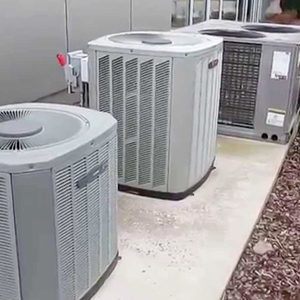
The Green New Deal might not be the law of the land, but many of its goals have and continue to come to bear. Broad proposals range from retrofitting all existing homes and businesses to be energy efficient to achieving greater social and economic equity through jobs training and education to boost renewable energy resources nationwide. In regenerative terms, the GND (which, it should be noted, has never included any specific policy proposals) is designed to be one grand and cumulative offset for fossil fuel subsidies that are meant to be terminated once the world comes to its senses, theoretically speaking.
The premise of the GND is very much alive and kicking, albeit in a piecemeal, figure-it-out-as-we-go sort of manner. The U.S. government’s rollout of IRA initiatives is evidence of just that. And now that the Biden-Harris Administration has made good on its 2021 promise to create a “Civilian Climate Corps” (see Section 215), we’re now that much closer to delivering on the equity portion of the Green New Deal’s scope.
Next-gen clean energy workforce
On September 20, the Administration announced the formation of the American Climate Corps, a workforce training initiative that, according to the White House, will mobilize “more than 20,000 Americans” for “deploying clean energy, implementing energy-efficient technologies, and advancing environmental justice,” and “creating pathways to high-quality, good-paying clean energy jobs.” This new Corps, which contains echoes of FDR’s New Deal–era Civilian Conservation Corps (1933-42), will require a consortium of federal agencies to get behind it, including the Departments of Labor, Interior, Agriculture, Energy, the NOAA, and finally, AmeriCorps. The latter will ostensibly be the Climate Corps’s umbrella organization and operate as an “implementing collaborator” at the federal and state levels.
“The initiative involves a big push to support pre-apprenticeship programs, which are entry-level training opportunities,” according to Amanda Finney, the Department of Energy’s deputy director of public affairs. “Many of the clean energy work opportunities will be in traditional trades, so this program will help job seekers better understand how they can work in clean energy and climate jobs as electricians or operating engineers, for example.”
One such set of pre-apprenticeships will be funded through the DOE’s Career Skills Training Program, which includes $10 million for grants. (Applications are due November 27.) These grants will cover the federal share of student training programs that, ideally, will lead to professional certifications for deploying efficient building technologies. (Of note, related Climate Corps–sponsored efforts focused on coastal resiliency, wildfire prevention, and environmental conservation all have separate funding channels through other agencies.)
Funding and state-by-state spread
Ignoring for a moment that $10 million is a pittance relative to what such a critical need demands, the green building community shouldn’t despair. After all, a hundred thousand here and a hundred thousand there for regional education and on-site job training can be stretched considerably when budgets are well managed. Further, upon unveiling the Climate Corps, the White House revealed that the number of states with their own climate corps initiatives has doubled, with five new states—Arizona, Maryland, Minnesota, North Carolina, and Utah—joining the ranks of the five with existing corps, those being California, Colorado, Maine, Michigan, and Washington. This exponential growth suggests that grants for training programs like the DOE’s could be leveraged as a federal subsidy for similar state-run programs.
Principal funding for state corps initiatives comes from grants and public-private partnerships, including local AmeriCorps chapters. California’s Climate Action Corps’s primary focus areas are urban greening, organic waste and edible food recovery, and wildfire resiliency. “However, we do have some flexibility to fit the needs of certain communities,” according to a program representative with California Volunteers. For example, the rep cites recently completed energy audits performed for two school campuses, education and outreach efforts to deploy electrification and weatherization, and related work to support solar and battery storage installations for low-income families and to evaluate the potential for residential and community solar in select parts of the state.
Maine’s Climate Corps, which was established through legislation that passed in early 2022 (acting on the state’s Climate Action Plan, published in December of 2020), differs somewhat from California’s “single flagship program,” according to Kirsten Brewer, Maine’s Climate Corps coordinator. Rather, Maine’s exists under “an umbrella model” in which “a network of different agencies” carry out specific tasks, from energy efficiency and coastal resilience to conservation. “The whole program is designed to have a lot of local voices and meet local priorities” in addition to (or despite) federal priorities as well, Brewer says. What this means for Maine and possibly other states who opt to cast a wider net, is that AmeriCorps isn’t the only game in town in terms of funding and collaboration. In all, the initiative is just rolling out and has “plenty of room for growth,” but even it its nascency it provides a suitable model for American Climate Corps’s eventual rollout.
Surmounting hurdles
Federal programs like this are welcome news, but in its proposed state, the American Climate Corps feels like a band-aid. We need band-aids, certainly, but we also need cardiac surgery. Thankfully, this doesn’t seem to be lost on federal officials, at least for now. “We are excited about the many partnership opportunities with organizations already doing this or related work,” says the DOE representative. This sentiment, in so many words, acknowledges what’s largely missing from the equation, namely, states with a plan.
In places like Wyoming, Kentucky, the Dakotas, and other states without dedicated climate corps and that desperately need to clean up their grids, enact better energy policies, and adopt better building codes, among other things, there is still opportunity. As the DOE indicates, there are several organizations and public-private initiatives—many of them focused on recruiting and training BIPOC students and working in marginalized communities—that would be more than pleased to partner up with federally-funded climate corps programs. (Groundwork USA, Mobilize Green, and We Repair are just a few noteworthy examples.)
Funding and the means to wage action will of course always be the biggest hurdle, particularly in states that lack any meaningful climate action plan and the legislation to back it up. As it turns out, we don’t actually need the Green New Deal to be law to get this stuff done. All the same, one didn’t need the IRA to get solar panels installed on their roof, but the added boost in federal incentives is certainly a leg up. So, if we intend to train the next generation of climate activists en masse and equip them with the tools and certifications to clean up this big mess we’ve made, having that federal legislation in place would be a welcome additive. The American Climate Corps has the potential to be another rung on that ladder.
________________________________________________________________________
Justin R. Wolf is a Maine-based writer who covers green building trends and energy policy.
Weekly Newsletter
Get building science and energy efficiency advice, plus special offers, in your inbox.















2 Comments
"The premise of the GND is very much alive and kicking, albeit in a piecemeal, figure-it-out-as-we-go sort of manner."
That pretty much sums it up. The same can be said for the Biden administration.
“[Deleted]”
Log in or create an account to post a comment.
Sign up Log in